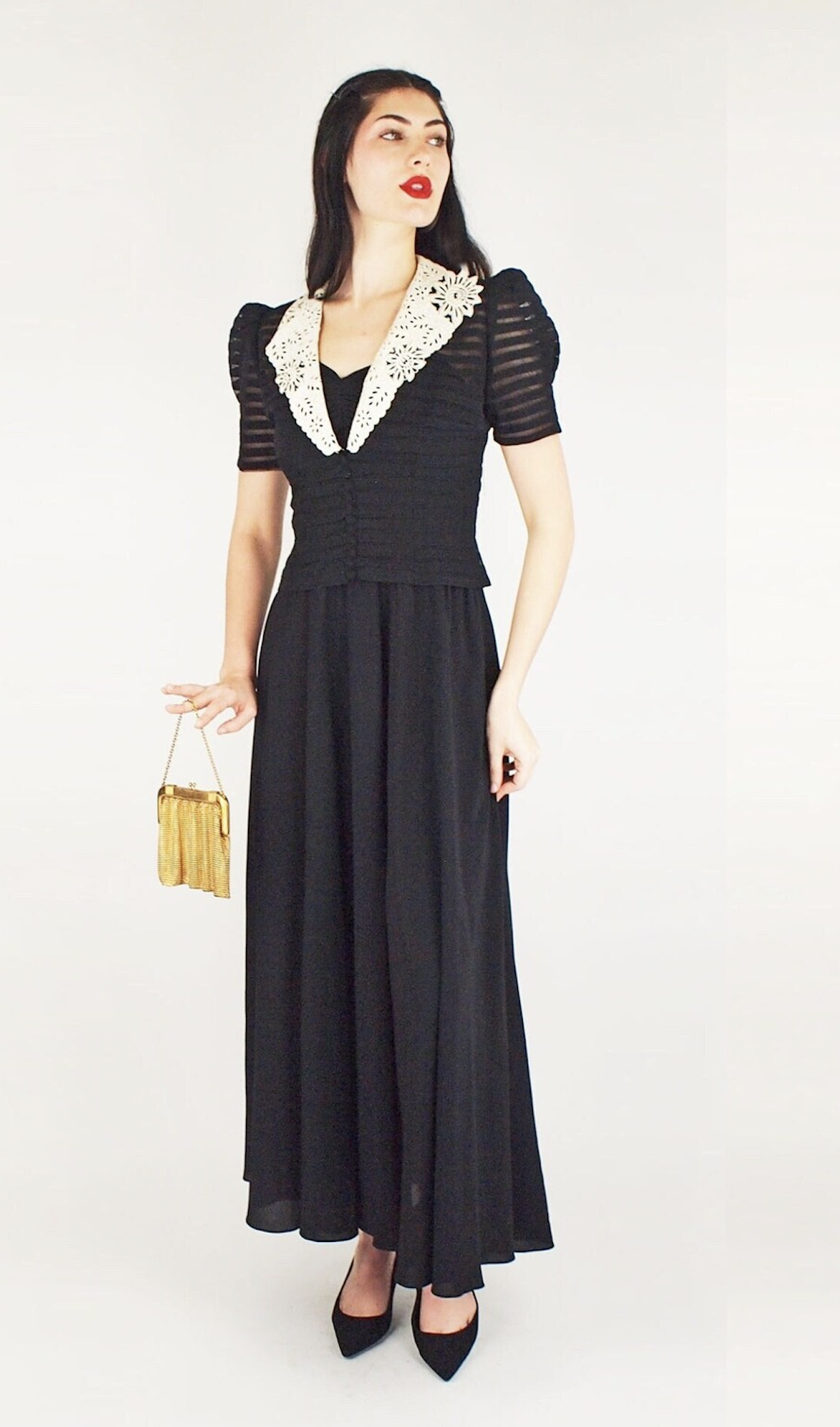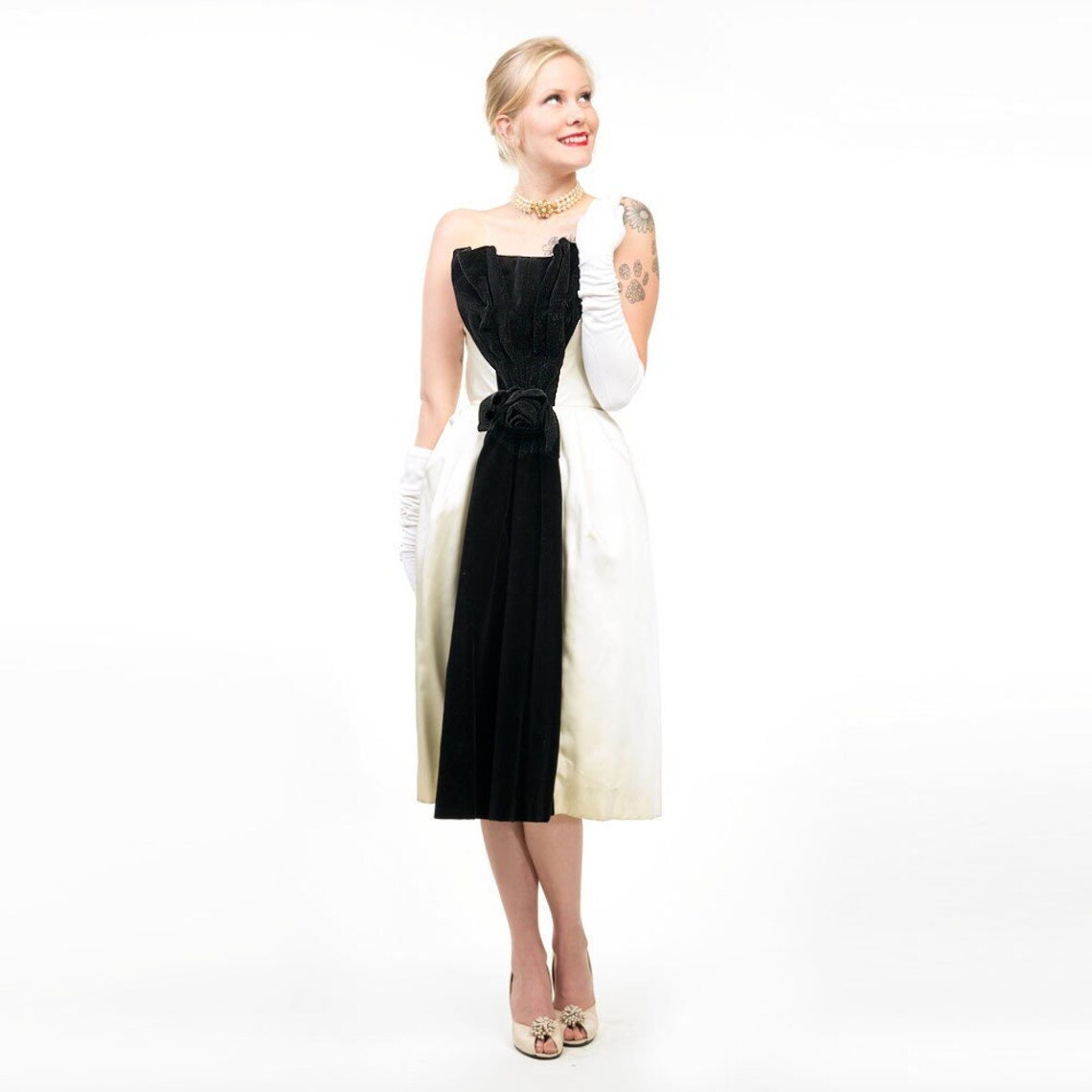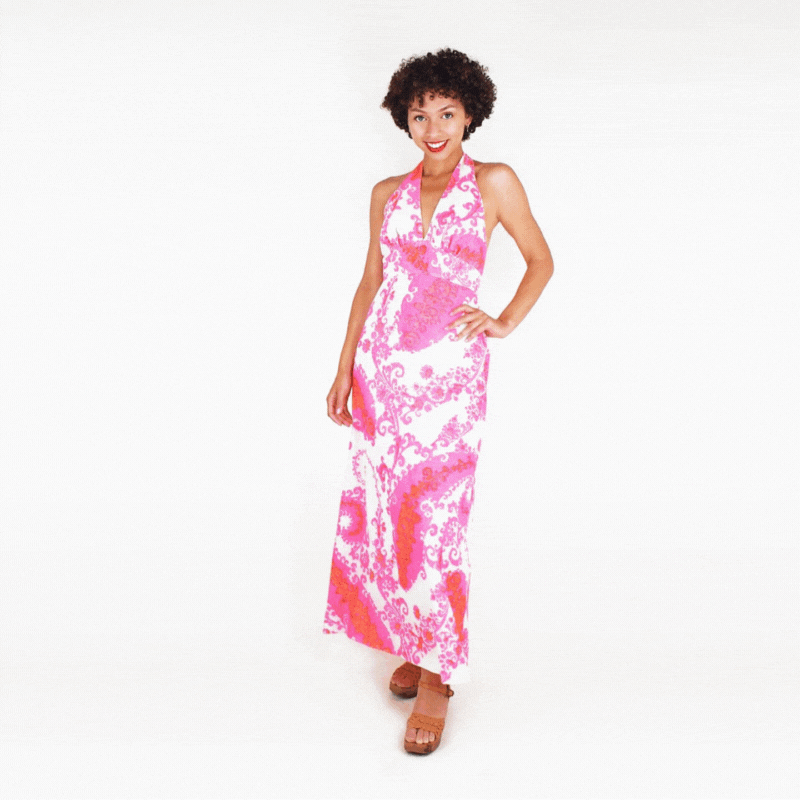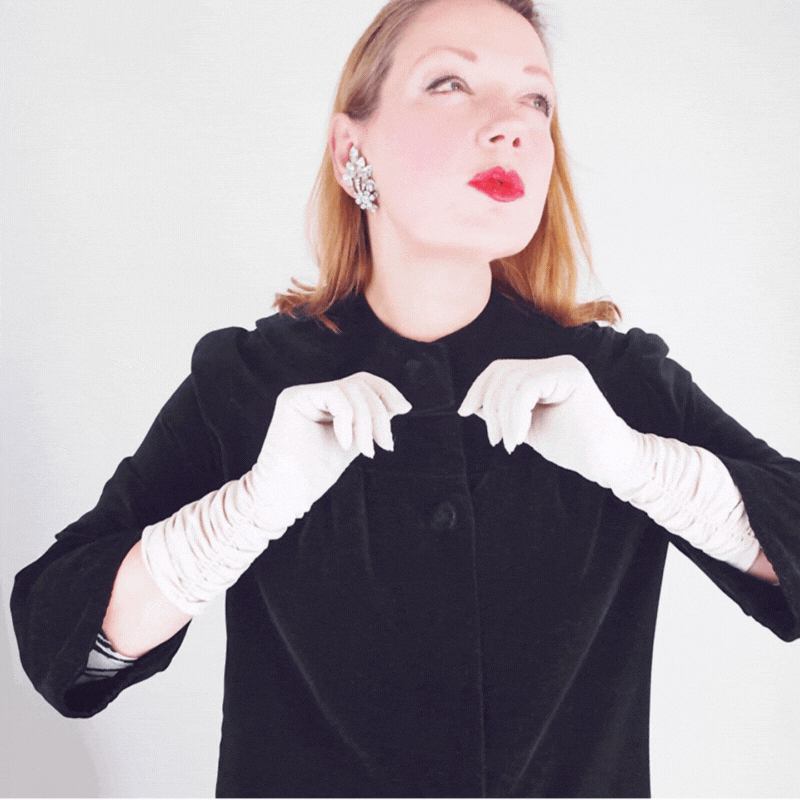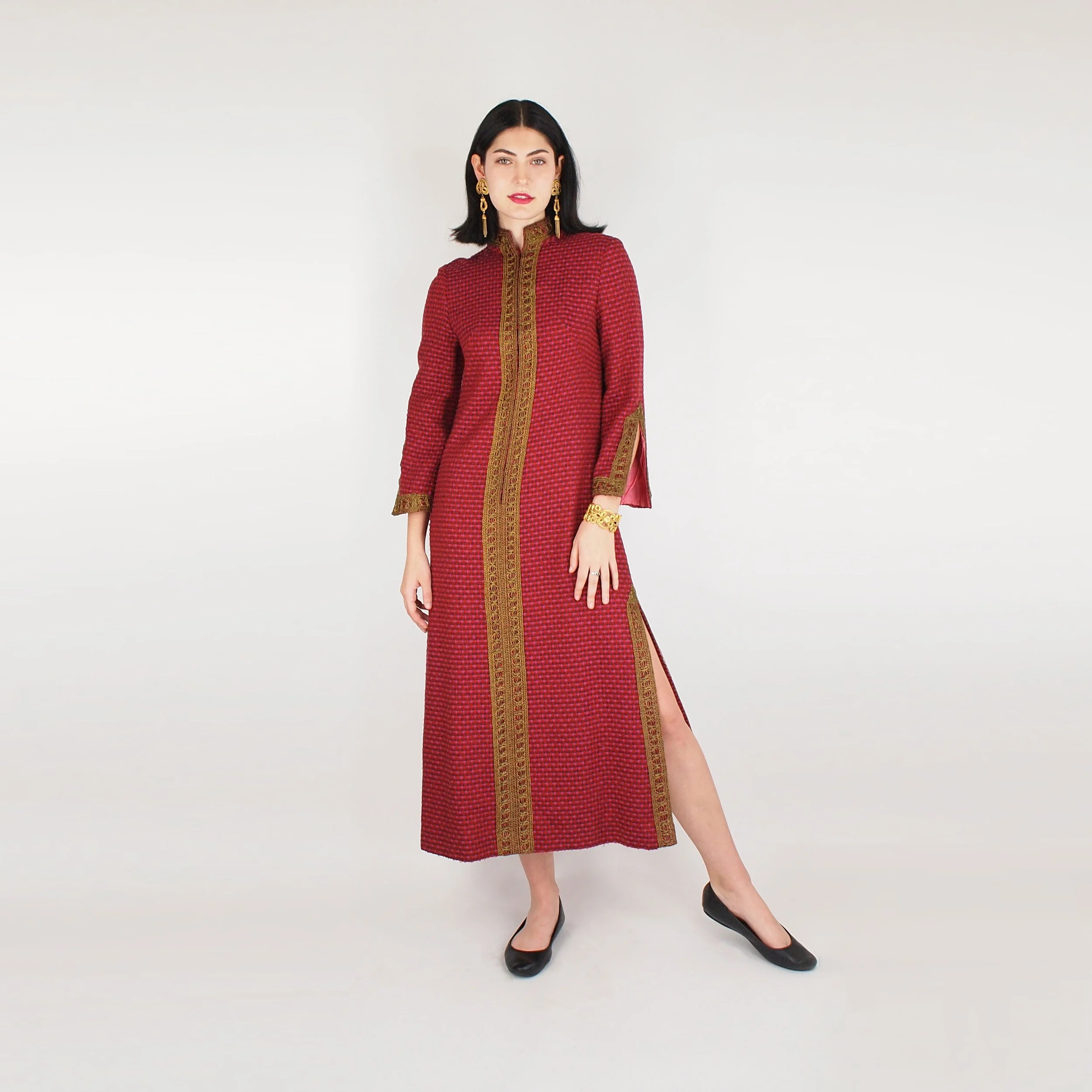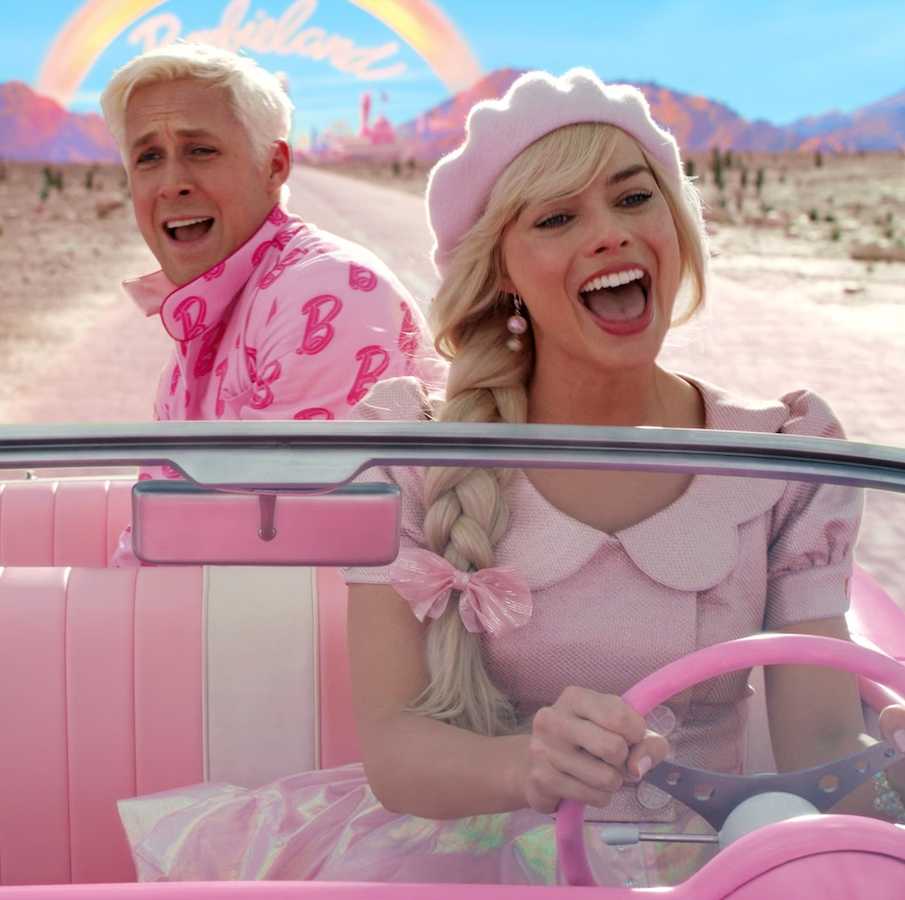A 1950s to early ’60s sheath dress such as the ones Marilyn Monroe often wore in the 1950s is almost always designed to highlight an hourglass shape, with a relatively fitted waist and a waist seam that doesn’t usually have any stretch.
If you know your measurements (and you need to in order to wear vintage clothing that fits) then you also need to consider how much extra space you need to be able to enjoy yourself in your vintage dress. This is called “wearing ease.”
How much ease do you need? Each of us is a little different in our fit preferences, but we all need to breathe, and most everyone needs to sit, walk, and move her arms. The minimum ease needed for wearing comfort in a fitted dress made of woven fabric is:
1 ½–2 ½” (3.8–6.4 cm) at the bust
¾–1" (2–2.5 cm) at the waist
2–3" (5–7.5 cm) at the hip (although it looks like Marilyn was going with less!)
So, let’s say you have a 28" (71.1 cm) waist, you will want to look for a vintage dress that measures about 29" (73.7 cm) at its waist.
Generally, for clothing made of a non-stretchy woven fabric, someone on the smaller end of sizes can comfortably go with the least wearing ease, while someone on the larger side will want to go with the higher ease measurements for comfort and a visually pleasing fit. By contrast, a garment made of a knit fabric can have no ease or even negative ease (in the case of a swimsuit, for instance) for a proper fit.
Another kind of ease is “design ease,” which is part of the cut of the clothing. Every era has a variety of styles and fits, and the ease will vary with the cut of the garment. If you are looking to fit a 1960s flaring tent dress made of a woven fabric, the design ease at the bust will be close to the wearing ease, but the design ease at the waist and hip will be much greater. For a strapless 1950s formal, there may be very little design ease through the bodice because the dress might not stay up if it isn’t properly tight! I think we can put up with very little wearing ease for more formal—and briefer!—occasions.
Even if you prefer a tighter fit in most of your modern clothing, please consider the age of the vintage garment and its fabric when choosing what ease you need. A vintage garment made of delicate or loosely woven fabric can show pulling along its vertical seams or even rip if worn too tightly. Thankfully, because of its construction, that 1950s strapless gown is more likely to be tolerant of a close fit. A 1920s beaded silk chiffon dress, on the other hand, is not going to tolerate any tightness.
Looking online, you may spot the waist measure you want for a vintage sheath dress, but the bust and hip measures look too big. That is not uncommon when comparing 1950s to modern sizing. The female body has gone through many fashion ideals, with fits that accentuate and exaggerate those ideals.
No matter what era of clothing you fancy, you have to choose by the measurement that most challenges the wearing ease you need, So, if you’re looking at a 1960s shift dress that has plenty of ease for your waist but is a bit too slim in the bust and hip, you will want to look until you find another shift with the ease you need at the bust and hip. Likewise, if you see a 1950s shirtwaist dress with a bust measurement that looks ideal for you, but the waist measure seems like it might be too tight, search for a similar dress with a waist measure that allows enough ease.
Even when shopping in person, knowing your measurements saves a lot of time, effort, and potential disappointment. Some vintage shops indicate measurements on tags. Others give general size indications or no indications at all. If you take along a measuring tape and measure the hanging item to get an idea if it will fit, you eliminate much of the guess work.
This blog is adapted from my book, Wear Vintage Now! Choose It, Care for It, Style It Your Way.






